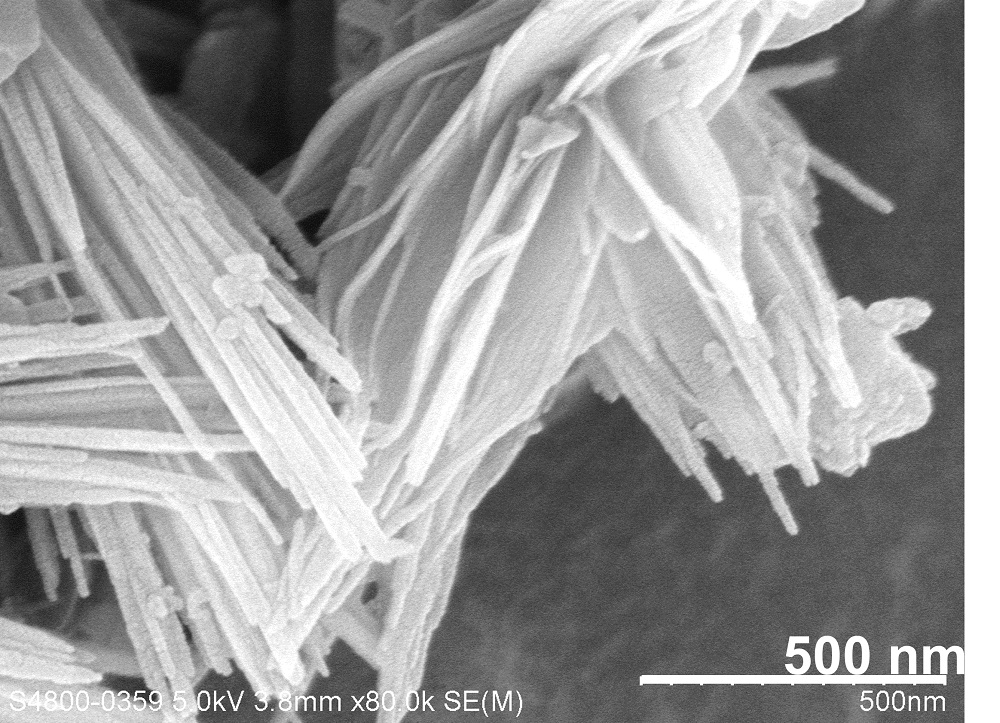“Sponge” that can capture the air pollutant nitrogen dioxide
Air pollution remains a threat to human health. According to World Health Organization statistics, outdoor and household air pollution cause about seven million deaths worldwide each year. A research team co-led by a scientist from City University of Hong Kong (CityU) has developed a novel sponge-like material for capturing ambient nitrogen dioxide (NO2) in the air, which offers a practical solution for controlling environmental pollution from NO2.
This innovative research was carried out by a team led by Dr Shang Jin, Assistant Professor in CityU’s School of Energy and Environment (SEE). Other research team members are from Australia, Mainland China and Hong Kong. Their findings have been published in the science journal Angewandte Chemie, in an article titled “Transition‐Metal‐Containing Porphyrin Metal–Organic Frameworks as π‐Backbonding Adsorbents for NO2 Removal”.
Capturing ambient nitrogen dioxide effectively

NO2 is a major roadside pollutant, which causes photochemical smog and damage to the human respiratory tract. NO2 is emitted to the air mainly from the burning of fossil fuels in power plants, factories and vehicles. One way to reduce NO2 in the air is through adsorption. To achieve this, Dr Shang and his team developed a class of aluminium-based, sponge-like porous solid material, featuring tailored transition metals as active sites at the porphyrin rings, which can selectively bind and thus remove NO2 from gas mixtures.
Porphyrins are a group of heterocyclic organic compounds. In addition to carbon atoms, at least one other atom makes up the “ring structure”. In nature, porphyrins bind with metal ions. The team’s research concept was inspired by the pi-backbonding interaction in the human body, through which the iron metal in the porphyrin of the hemoglobin protein can selectively bind oxygen molecules where pi-backbonding occurs.
“We mimicked nature and realised the unique pi-backbonding interaction between our adsorbents and the targeted pi molecule, NO2. Very few adsorbents have high NO2 adsorption capacity and good regenerability (allowing repeated use) simultaneously, but we achieved this,” said Dr Shang. The key to achieving both high NO2 adsorption capacity and good regenerability is a moderate strength interaction between NO2 and the transition metal at the adsorption site.

This novel adsorption-based technology complements the conventional selective catalytic reduction method, which is applicable only to NOx (both NO and NO2) conversion at high temperatures (about 250 to 600 °C). The new material can mitigate ambient NO2 pollution from low-temperature exhaust, such as diesel-powered off-road vehicles and exhaust gas produced by on-road vehicles during cold starts.
“Our successful demonstration of selective NO2 adsorption in ambient temperature is conducive to the development of a series of technologies for low-temperature NO2 pollution control, such as sensing, filtration, and catalysis of low-temperature NO2, in particular from environments easily polluted by NO2, including tunnels and semi-confined car parks,” said Dr Shang.
Potential application in treating other gases
The research results showed that the adsorbent has high stability, selectivity towards NO2, high adsorption capacity and regenerability. It is resistant to corrosion and is not affected by humidity. “The highly reactive nature of NO2 makes studying the adsorption of such a ‘nasty’ and toxic gas very unpopular, so studies are very limited. Thus, our work represents a rare success in this emerging area,” said Dr Shang.
The adsorbent can be made into different forms, depending on its application, such as spherical shapes for use in ventilation systems or filters for respirator masks. Dr Shang pointed out that the new knowledge gained from this research will guide the design of robust pi-backbonding adsorbents for various gas separation applications related to energy production and environmental remediation. The team hopes that this pioneering study will lay the foundation for the development of next-generation low-temperature NO2 mitigation technology to enable effective NO2 pollution control and management.

Dr Shang and Dr Gu Qinfen, who is from Australian Synchrotron (a branch of the Australian Nuclear Science and Technology Organisation, ANSTO), are the corresponding authors of the paper. The first author is SEE PhD student Shang Shanshan. Other researchers are from The University of Hong Kong, the Guangzhou Institute of Energy Conversion in the Chinese Academy of Sciences, and Jilin University.
The research received funding support from CityU, the National Natural Science Foundation of China, the Science, Technology and Innovation Commission of Shenzhen Municipality, and the Research Grants Council of Hong Kong.
DOI number: 10.1002/anie.202007054